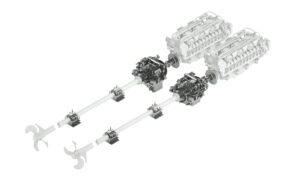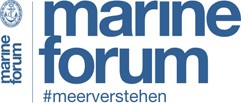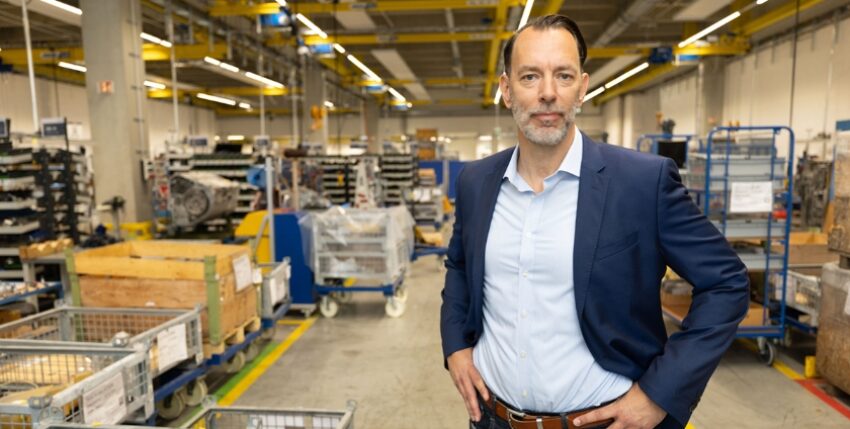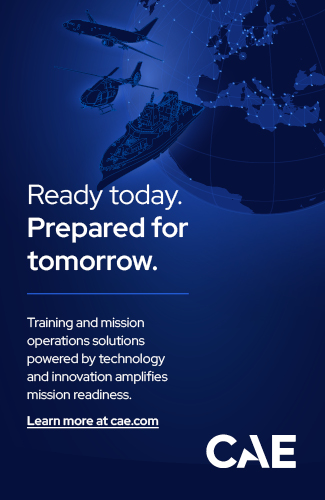Renk supports the company with its cutting-edge technology the NATO countries and their most important allies. CEO Alexander Sagel sets four priorities for the future of the company. A Interview by Burghard Lindhorst.
Mr Sagel, since February You at the top of the Renk Group. Hardly in office the security policy situation further exacerbated. Was Renk prepared for this?
We are experiencing a turning point that we would all rather not experience. In these times, we should be glad that there are companies like RENK in Germany and Europe that can and want to take responsibility for these changes. The political and financial brakes have been released - finally. Now we have to pick up speed and utilise the strong momentum. If the framework conditions are right, industry and politics can achieve great things together. We want to make our contribution to this. RENK is prepared. Overall, we are in an excellent position as a company, be it in terms of our technologies, our financial resources, our high order backlog or our capacities and locations.
What are you focussing on?
Being able to work at the top of the RENK Group is a wonderful task and a great responsibility. The company, which now has over 4,100 employees at 21 locations worldwide, is truly unique in terms of its product portfolio and its strategic position on the market.
Overall, the speed must now increase significantly in order to translate the defence budget into concrete projects and then also into contracts. That is why I have set four priorities.
Operational excellence is a key focus. This is the number one priority. The defence industry cannot hide behind the statement that there is no money. The existing capacities must now be utilised. In this respect, we are focussing on output and performance - in other words, operational excellence.
The second important point is technology. RENK now supplies 152 years of cutting-edge technology in the field of mechanics and hydraulics. Our share of the market relevant to us is 75 per cent. We are also a technological leader. We must and want to defend this position in the coming years. We are looking at electrification, hybridisation and digitalisation in both the land systems and marine sectors.
On digitalisation: Today, 99.9 percent of our transmissions consist of fine mechanics, like clockwork. The future requirements resulting from the digitalisation of warfare will demand a higher degree of autonomy and external control capabilities from the platforms. We want to and will also position ourselves as RENK, as a key enabler, especially for tracked vehicles, regardless of whether we are talking about 60 tonnes or one tonne. We will contribute to digitalisation and autonomisation everywhere with our gearboxes and the corresponding software.
The third point is internationalisation. We have been an international group for a long time and have a strong footprint in the USA. Over the last five to six years, we have regularly expanded here through acquisitions. Now we are in the process of tapping into India. We recently opened a brand new plant there for the local defence market. As an example of the programmes in which we are represented, I would mention the Light Battle Tank. And we have also expanded our footprint for the US Navy in the USA in recent months through the acquisition of RENK America Marine & Industry.
The last point: we will have strong organic growth. The order book is full, we have orders totalling 5.5 billion euros. That's quite a lot for a small, modest company like RENK. But as in the past, we will also consistently look to close potential gaps, for example in the area of digitalisation, through further acquisitions if the opportunity arises.
The USA is the largest western defence market.
Yes, exactly. In terms of land systems, we are represented in the legacy platforms, for example in Bradley. The programmes will run until the mid-2030s.
In any case, we are recognised as an American company. When I talk to the authorities or meet the governor of Michigan, for example, they know RENK America in Muskegon. But they don't really know RENK in Augsburg, Germany.
America is a large and important market for us. We have made between 30 and 35 percent of our turnover in our Defence business in the US Army. Traditionally, we have also developed marine gearboxes from Augsburg over the last few decades and then transported them to the USA. But here, too, we have to rethink. We have to localise. For this reason, we bought a small company a few months ago, Cincinnati Gearing System. This is an established supplier, especially for the Navy. With this strategic background, we have our local footprint. We can play a part in future programmes, such as various destroyers, which are all due to arrive at the end of the decade. Without this localisation in the USA, this would not be possible.
In which direction is the navy heading?
For more than 70 years, RENK has been a renowned partner for the world's most successful shipyards in the field of naval systems, both in civil shipping and in the defence sector. Our explicit aim in the defence sector is to meet the growing demand from NATO countries and major non-NATO allies and to support them with our cutting-edge technology. Most of these navies are already RENK customers, making us one of more than 40 navies worldwide that rely on RENK. We want to further increase our market share here. Basically, we are pursuing similar approaches as in the land sector in order to demonstrate the future performance and capabilities of unmanned units above and below water through electrification and digitalisation.
What about the F127? What about the F126?
The programmes of the domestic navy - the German Navy - are of course always something special for us. The defence industry is always about supporting our soldiers in the defence of what is important to us - not least democracy, the rule of law and free sea lanes. Programmes such as the F126 and F127 frigates are naturally of outstanding importance as cornerstones of our national defence at sea. In addition, the German frigates are also technologically very challenging projects. Here, the limits of what is technologically feasible are really being explored on the basis of a holistic approach and pushed forwards step by step as part of new innovations. It's fun and fills us with pride to be right in the middle of it with a critical component and to contribute to the success of the project with our expertise. I can say that we have planned for the five F127 frigates in terms of capacity. And we assume that the sixth will also be released. Regarding the F126: I assume that this project will also be successfully completed. From our side, it's on track.
And what about international marine activities?

As RENK, we are also well positioned beyond Europe's borders. With the acquisition of Cincinnati Gearing Systems and its integration into our Group as RENK America Marine & Industry (RAMI) in Cincinnati, we have gained another production site in the USA, which is already excellently positioned in the navy and successfully serves the US Navy as a supplier from its own country. We will continue to expand this with our expertise in large propulsion systems for warships in the future.
There is an interesting development in Japan. We were not previously represented there. But now we have received our first strategically important order, beating out a local competitor for marine orders. This is strategically very important! Once you're in, the door is open. And that's how it is now!










